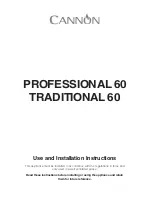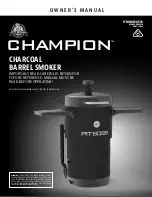
Tested for you in our cooking studio
en
31
J
Tested for you in our
cooking studio
Tested for you in our cooking studio
Here, you can find a selection of dishes and the ideal
settings for them. We will show you which type of
heating and temperature are best suited to your dish.
You will get information on suitable cooking
accessories and the height at which they should be
placed in the oven. You will also get tips about
cookware and preparation methods.
Notes
■
The values in the table always apply to dishes
placed into the cooking compartment when it is cold
and empty.
Only preheat the appliance if the table specifies that
you should do so. Line the accessories with
greaseproof paper before preheating the appliance.
■
The times specified in the tables are intended as a
guide only. These values depend on the quality and
composition of the food.
■
Use the accessories provided. You can purchase
other accessories from after-sales service or
specialist retailers.
Remove any unnecessary accessories and
ovenware from the cooking compartment.
■
Always use oven gloves when taking hot
accessories or ovenware out of the cooking
compartment.
■
Your oven can be used to bake on one level.
Caution!
The appliance was manufactured in accordance with
the reference gases specified in the standards. If a gas
is used which does not comply with the specified gas
mixture and pressure, cooking performance and heat
output may not produce the desired result.
Note:
A lot of steam can build up in the cooking
compartment when cooking food.
Your appliance is very energy-efficient and radiates very
little heat to its surroundings during operation. Due to
the high difference in temperature between the
appliance interior and the external parts of the
appliance, condensation may build up on the door,
control panel or adjacent kitchen cabinet panels. This is
a normal physical phenomenon. Condensation can be
reduced by preheating the oven or opening the door
carefully.
Cakes and pastries
Cake tins
When you are baking in the cake tin, insert the wire rack
at the level indicated and place the cake tin on the wire
rack.
Dark-coloured cake tins are the most suitable.
If you use light-coloured baking tins or glass, the baking
time increases and the cake is not browned evenly.
Only use heat-resistant glass dishes. Do not place a hot
glass dish on a cold or wet surface. The glass could
break.
If you want to use silicone moulds, follow the guidelines
in the manufacturer's instruction manual. Silicone
moulds turn out slightly smaller than normal cake tins.
For this reason, the quantities may be slightly different
to those indicated in your recipe.
Baking tables for the lower burner in the gas oven
In the tables, you will find the optimum types of heating
for a selection of cakes and gateaux. The temperature
and cooking times depend on the quantity and
consistency of the dough.
The values in the table apply to dishes placed into the
cooking compartment when it is cold and empty.
The heat is distributed in the oven as soon as the gas
escaping from the lower gas burner is ignited. For this
reason, the underside of food is usually more browned
than the top.
Gas designation
Gas mixture (%)
G20
CH
4
=100
G25
CH
4
=86, N
2
=14
G30
n-C
4
H
10
=50, i-C
4
H
10
=50
Summary of Contents for HGW3ASQ50M
Page 2: ......






































